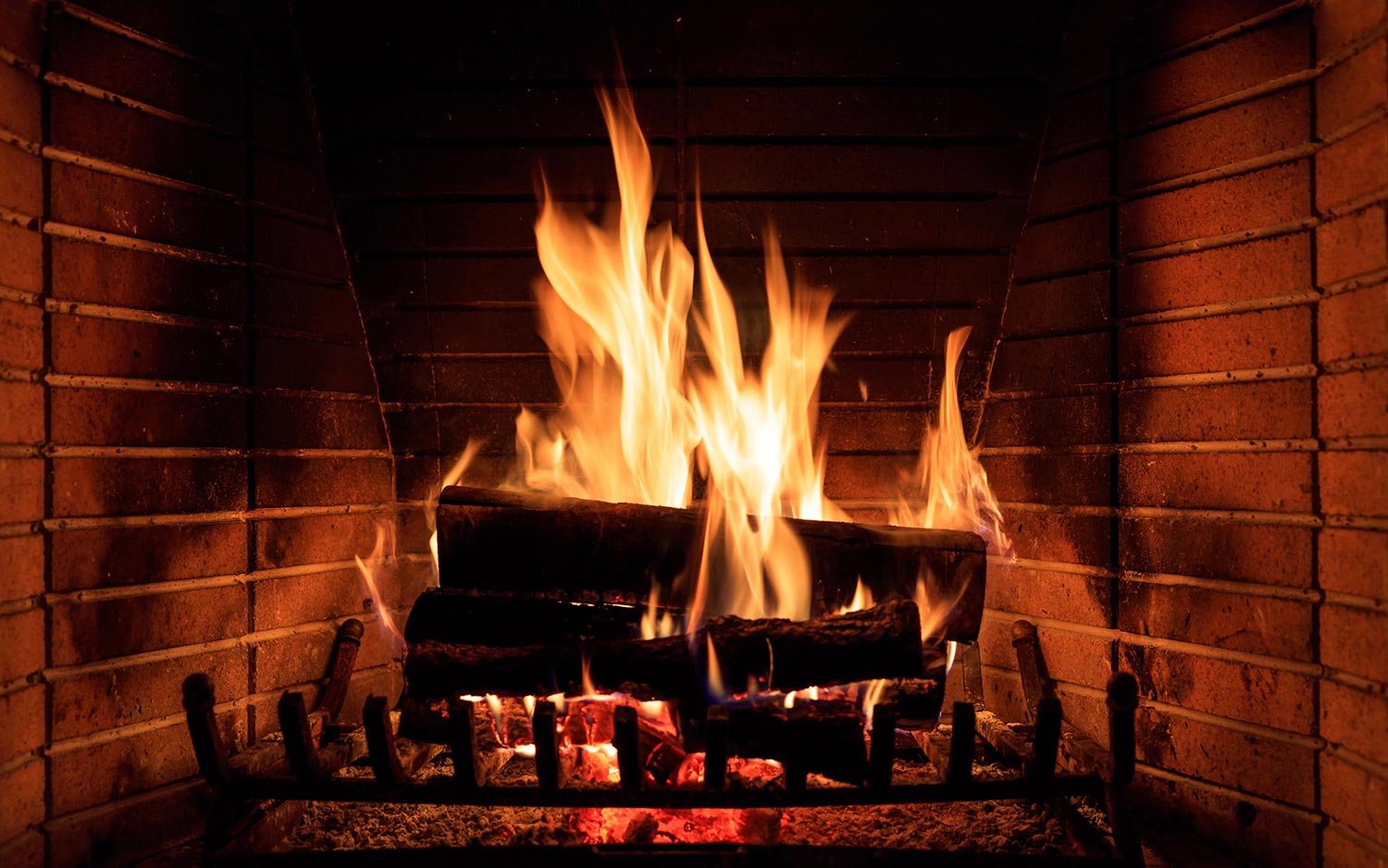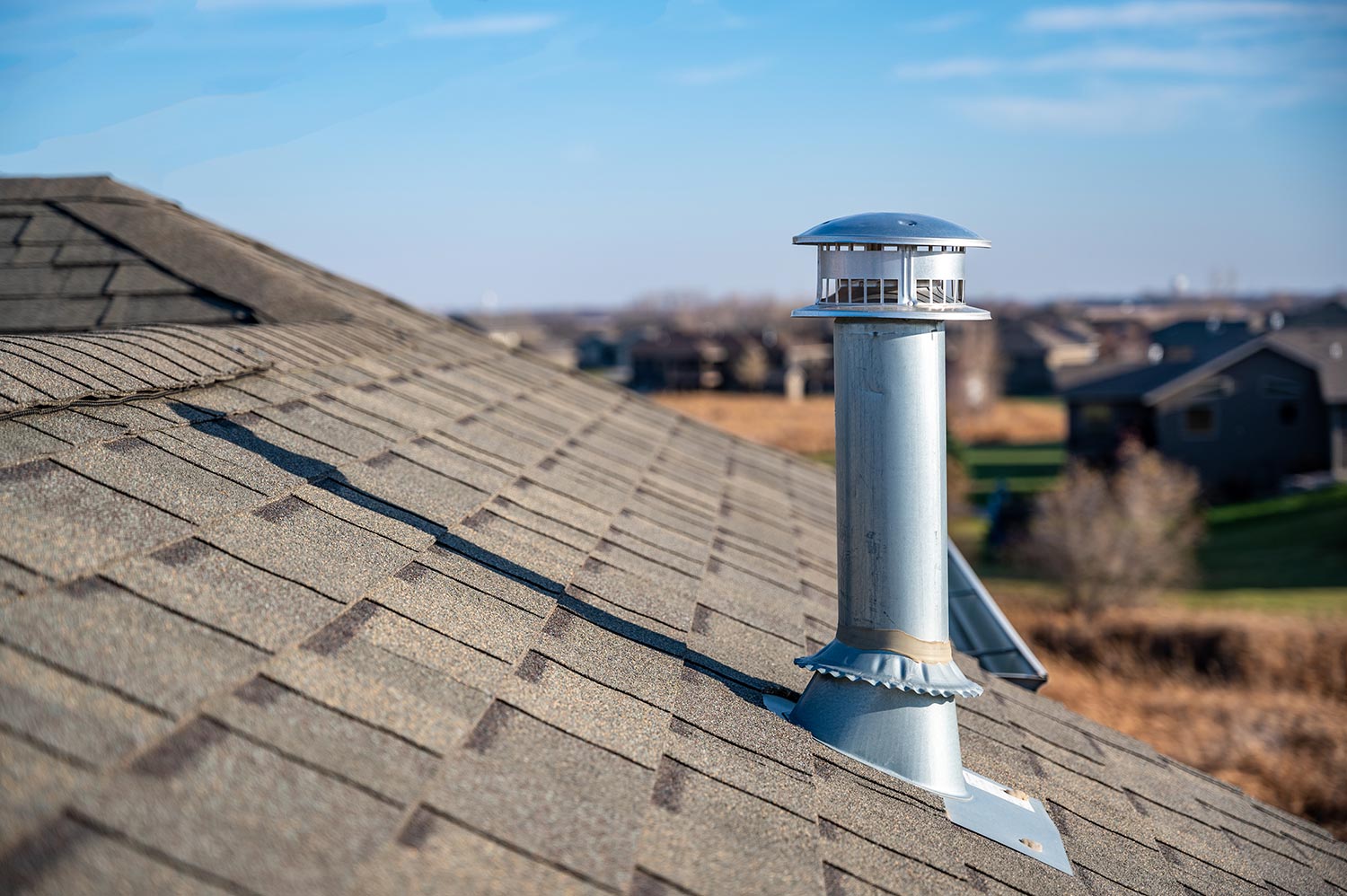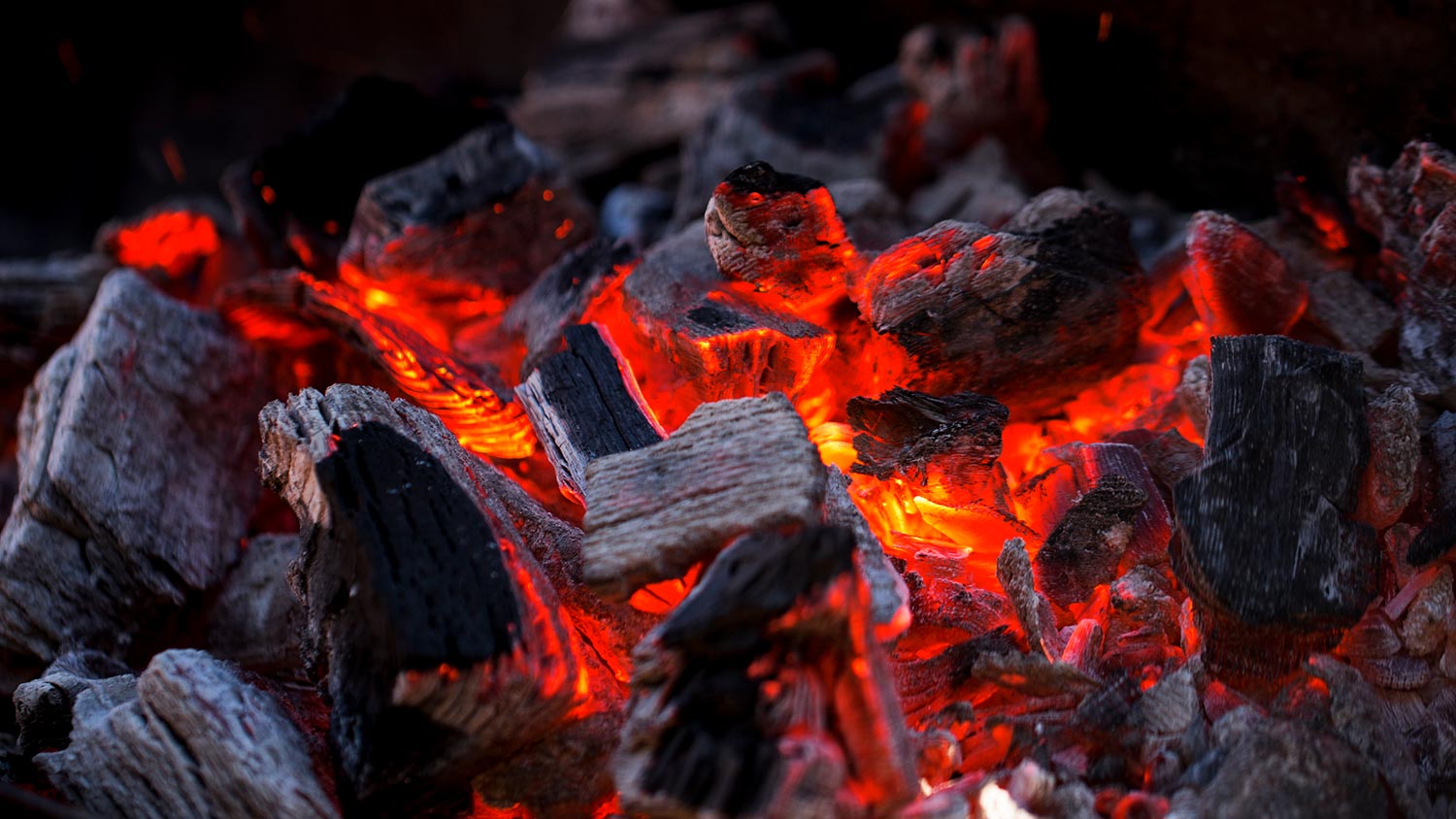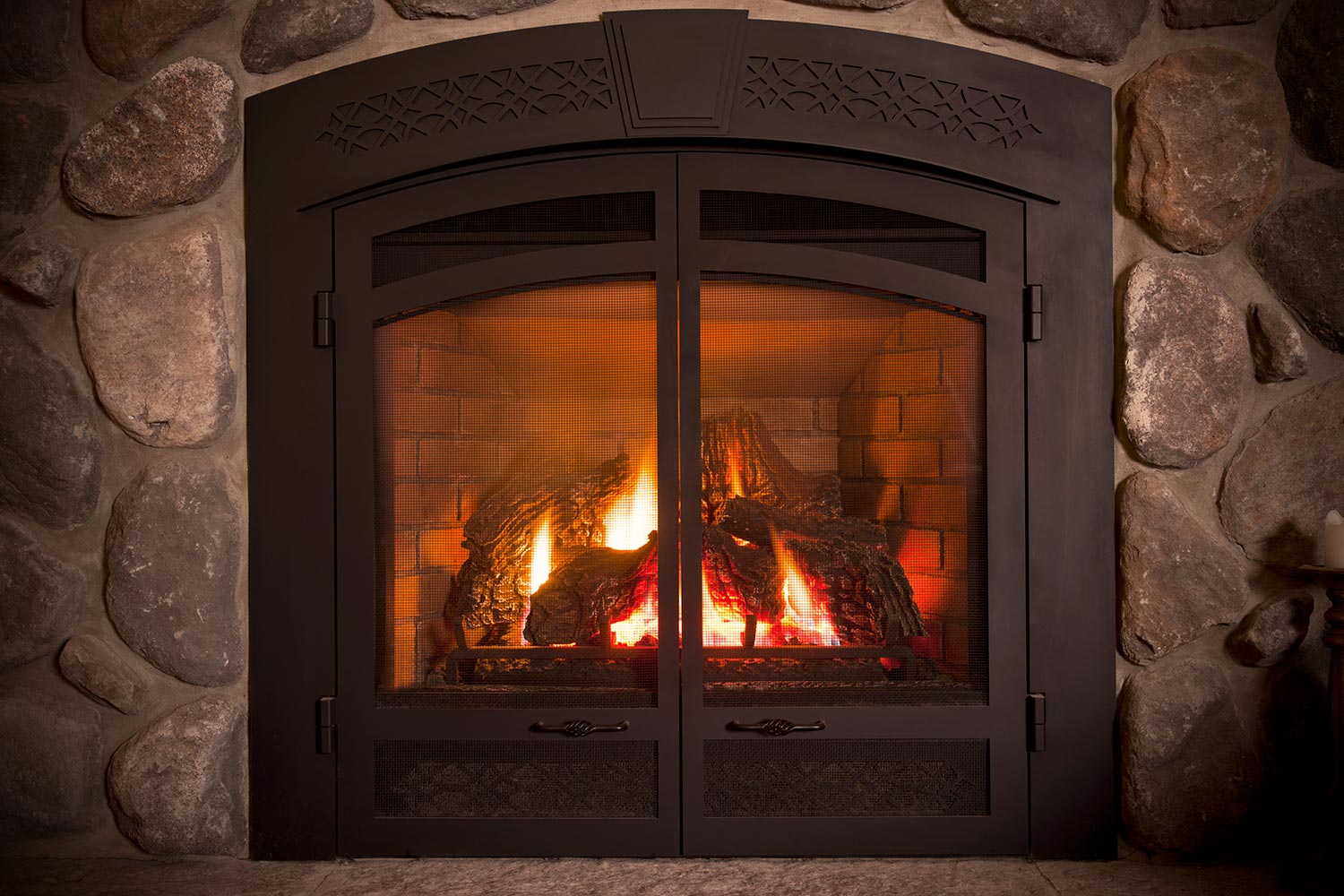If you are unaccustomed to using a fireplace, you likely have questions that need answering before you begin heating your home. One of the most common questions is whether the vent should be open or closed.
We've done our research and have come up with the best answer to meet your needs. See our findings below.
When in use, the fireplace vent should always be open. This prevents smoke from entering your home. If the vent is closed, it will block the chimney, causing smoke to invade your living space.
Additionally, you should leave the vent open when using a gas fireplace as well. Failing to do so can result in carbon monoxide poisoning.
Using a fireplace is a little more complex than just opening and closing the damper. Read further as we help you get acquainted with the proper procedures for using a fireplace, including when the vent should be closed, how to tell if the vent is open, whether you can leave the vent open overnight, and more.

Should A Fireplace Vent Be Open?
The fireplace vent is what allows the smoke to escape from your chimney. If you light a fire with the vent closed, all the smoke will come rolling into your home. Therefore, the damper should be open as long as you have a fire going.
Once the fire has been put out, you should leave the vent open until all the coals have cooled. Once this occurs, you should then close the damper.
If you are not using your fireplace, the vent should remain closed. Think of your chimney as you would a window. If you leave a window open, cold air creeps in from the outside. It's the same concept with chimneys.
If you leave the damper open, cold air from the outside will make its way into your home through the chimney. Likewise, your warm air will escape.
This analogy also applies during the summer months. If you leave the vent open, your cool air will escape through the chimney, and hot air will creep inside the home.
If you are experiencing a cool spring day, you may want to let in some fresh air by opening your fireplace damper. Just don't forget to close the vent before bedtime.

How Do Fireplace Vents Work?
According to WoodHeat.org, there are two methods in which fireplaces are vented. First, you should understand that all wood-burning fireplaces must be vented vertically.
Gas fireplaces, on the other hand, can be vented either vertically or horizontally.
Wood Burning Fireplace
All fires need oxygen to ignite and stay lit. The oxygen used to fuel a fire is called combustion air.
One method of venting a wood-burning fireplace is by pulling air from inside the home for combustion. The smoke and carbon monoxide then exit through the flue.
Another method of venting wood-burning fireplaces is by pulling combustion air from outside.
The outside air does not come from the chimney. Instead, a vent is installed at the back of the fireplace, leading to the outside. It pulls air inside, allowing it to fuel fires.
The smoke and carbon monoxide are then expelled through the flue.
Gas Fireplace
You can have either a direct vent or a B-vent with a gas fireplace. A direct vent is becoming more common and is more energy-efficient than a B-vented fireplace.
Unlike a traditional fireplace, a gas unit can have a pipe leading either vertically or horizontally.
Direct Vent
If your fireplace utilizes a direct vent, there will be two pipes. They can run through a flue, but many feed through a direct external opening, usually through a wall.
One pipe pulls outside combustion air inside to a sealed firebox. The other pushes the fumes outside.
B-Vent
If your gas fireplace features a B-vent, you will only have one pipe. The combustion air comes from inside the home, and the fumes are expelled through the pipe to the outside. But this method of venting can be a bit risky.
There is a chance the exhaust fumes could reverse course, coming back down the flue instead of exiting the home. That's why many modern gas fireplaces feature an emergency sensor that will put out the fire if this ever occurs.
How Do I Know If My Fireplace Flue Is Open Or Closed?
What you are referring to as the flue is likely the damper/vent. The fireplace flue is the hole from which the smoke travels and escapes the home. When you think of a flue, it is basically the inside of your chimney.
On the other hand, the damper is the sliding plate that opens and closes access to the flue.
With that in mind, it's not difficult to figure out if your vent is open or closed. There are two ways you can do this. Lean your head inside the fireplace, and look up.
If you can see through the chimney, the vent is open. If you see a plate, the damper is closed.
There is also an easier way to determine if the damper is open or closed. Reach your hand inside the chimney. If you don't feel anything, the damper is open.
However, if your hand hits a plate, the vent is closed. You'll need to slide your hand all the way across to make sure the vent is completely closed.

Not all chimneys feature a vent on the inside of the home. Instead, some have a top-mounted damper. If this is the case, there should be a metal chain dangling next to your fireplace or inside the flue.
The chain will be pulled tightly and attached to a hook or other mount when the damper is closed. If the chain is hanging loose, the vent is open.
Can I Leave The Flue Open Overnight?
Although cold air will seep into your home through the open vent, there is no harm in leaving the damper open overnight. It is imperative to make sure all coals and embers are completely cool before closing your vent.
The vent should remain open if you cannot safely put your hand in the ashes without getting burned.

Hot embers create carbon monoxide. If you close the damper before the fire has completely cooled, there is a chance that you and your family could suffer from carbon monoxide poisoning.
In this sense, it can be beneficial to leave your vent open overnight to ensure that all fumes are gone before closing the vent the following morning.
Do You Need To Vent A Gas Fireplace?

When you picture a gas fireplace, you may not think it needs to be vented. After all, it doesn't create any smoke. But this is not the case. It is just as important to vent a gas fireplace as it is to vent a wood-burning fireplace.
Although you don't see any smoke, gas fireplaces create harmful emissions such as nitrogen and carbon monoxide. Therefore, an improperly vented gas stove or fireplace can be deadly.
When Should A Fireplace Vent Be Used?
Gas fireplaces and wood-burning fireplaces should always be equipped with vents, although you do not need a vent if you have an electric fireplace.
With both gas and wood-burning units, you should leave the vent open when burning a fire. It will be easy to tell if you have mistakenly left the vent closed with a traditional fireplace because smoke will be billowing into your home.
On the other hand, if you own a gas unit, you may not notice that you accidentally left the vent closed. For this reason, you should always double-check before lighting your gas fireplace.
Leaving the damper closed while you have a gas fire burning can cause carbon monoxide poisoning and death.
In Closing
The damper of your fireplace is an important feature. If left closed, the smoke would not be able to escape through the chimney, leaving you with smoke flowing uncontrollably inside your home. This is more than just an inconvenience.
Contrary to popular belief, carbon monoxide is not exclusive to gas fireplaces. Instead, wood-burning fires can emit this harmful gas as well.
Keep yourself and your family safe by following the guidelines in this article when using both your wood-burning and gas fireplaces.
For more information on the proper use of fireplaces, check out these other posts:
Should You Open the Flue on a Gas Fireplace?
Do Vented Gas Fireplaces Need A Chimney? [Or how else to vent them]
Fireplace Flue vs. Fireplace Damper: What Homeowners Need to Know
